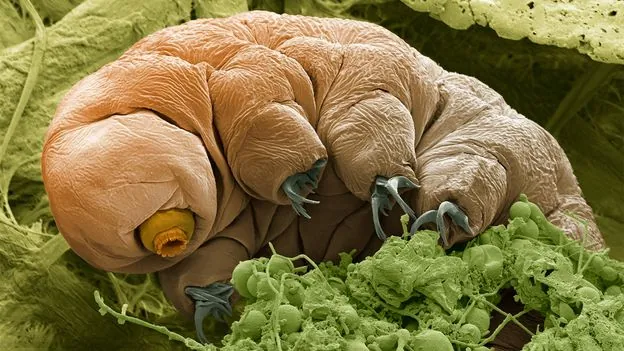
Meet the Ultimate Survivor: Tardigrades and Their Incredible Resilience
2025-09-18
Author: Kai
Tiny Titans of Survival
Picture a creature no bigger than a pinhead, yet one that can withstand baking heat, freezing temperatures, radiation, and even the vacuum of space. Meet the tardigrade, often dubbed the water bear or moss piglet. These astonishing micro-animals are believed to potentially outlast every other species on Earth, with some experts speculating they could survive until the Sun itself fades away.
An Unlikely Space Explorer
In 2007, tardigrades made history as the first known animals to brave the void of outer space and return alive. After being blasted into orbit, many survived the harsh conditions, with some even laying healthy eggs in zero gravity. Their resilience was further tested during the ill-fated Israeli lunar mission, Beresheet, which crashed on the Moon, leaving their survival a tantalizing mystery.
Unlocking Nature’s Secrets
Scientists have identified around 1,500 species of tardigrades, but their classification within the animal kingdom remains complex. These hardy critters thrive in damp environments like moss, lichen, and leaves, but they have also been found in extremes — from the icy peaks of the Himalayas to the depths of the ocean.
Mastering the Art of Survival
So how do tardigrades endure such extremes? Their secret lies in their ability to enter a state of suspended animation known as the 'tun' state. When faced with desiccation, they shrivel up, retracting their legs and head, and slashing their metabolism to a mere 0.01% of its normal rate. They can remain dormant for years, only reviving upon contact with water.
Genetic Mysteries Revealed
Research has revealed that specific proteins known as TDPs (tardigrade-specific intrinsically disordered proteins) play a pivotal role in their survival. When tardigrades dry out, these proteins fill their cells, forming a protective gel that cushions vital organ structures and prevents cell damage. This intriguing mechanism has even benefited yeast and bacteria, enhancing their drought survival.
Extreme Heat and Cold? No Problem!
Tardigrades are also remarkably resilient to heat. Studies show they can withstand temperatures exceeding 150°C (302°F) but only when desiccated. In a frozen state, they have demonstrated survival even just above absolute zero, showcasing their incredible adaptability.
Radiation? Bring It On!
These minuscule powerhouses are not only survivors but thrivers when faced with radiation. Recent research uncovered a protein, dubbed Dsup, which acts like a protective shield around their DNA against ionizing radiation. This discovery raises fascinating possibilities for human applications, particularly in medical fields.
Lessons in Resilience: Tardigrades and Humanity
Scientists are now leveraging the astonishing attributes of tardigrades to address human challenges, from enhancing cancer treatments to preserving vital medical supplies without refrigeration. As we uncover the secrets of these amazing survivors, there’s hope that unlocking their capabilities could also aid in combatting climate change effects affecting their own populations.
The Evolutionary Enigma
Understanding why tardigrades evolved such incredible resilience remains a quest for scientists. Their permeable skin might necessitate these adaptations to survive harsh conditions worldwide. As our understanding deepens, the potential benefits of these discoveries could lead to groundbreaking advances, not just for humans but for protecting the ecosystems that depend on these mysterious micro-survivors.



 Brasil (PT)
Brasil (PT)
 Canada (EN)
Canada (EN)
 Chile (ES)
Chile (ES)
 Česko (CS)
Česko (CS)
 대한민국 (KO)
대한민국 (KO)
 España (ES)
España (ES)
 France (FR)
France (FR)
 Hong Kong (EN)
Hong Kong (EN)
 Italia (IT)
Italia (IT)
 日本 (JA)
日本 (JA)
 Magyarország (HU)
Magyarország (HU)
 Norge (NO)
Norge (NO)
 Polska (PL)
Polska (PL)
 Schweiz (DE)
Schweiz (DE)
 Singapore (EN)
Singapore (EN)
 Sverige (SV)
Sverige (SV)
 Suomi (FI)
Suomi (FI)
 Türkiye (TR)
Türkiye (TR)
 الإمارات العربية المتحدة (AR)
الإمارات العربية المتحدة (AR)